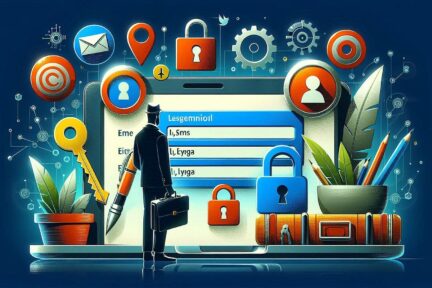Ensuring effective IT support and maintenance is paramount in today’s technology-driven world. However, with the eve, keeping up with the demands can be challenging for businesses with the ever-evolving IT landscape-evolving IT landscape, keeping up with the demands can be challenging for businesses. That’s why we have compiled a list of essential tips to help you streamline your IT support and maintenance processes.
In this article, we will explore five key strategies that can significantly enhance the efficiency and effectiveness of your IT support. We will cover everything from prioritising user experience to proactive monitoring and updating.
You can minimise downtime, optimise system performance, and improve customer satisfaction with the right approach. Our easy-to-implement tips will empower you to overcome common IT challenges and ensure smooth operations.
These tips are invaluable whether you are an IT professional or a business owner seeking to enhance your IT infrastructure. Stay tuned as we explore IT support and maintenance, providing you with the actionable insights you need to succeed.
In today’s fast-paced digital environment, effective IT support and maintenance cannot be overstated. Organisations rely heavily on technology to conduct daily operations, maintain communication, and deliver customer service. A well-functioning IT system enhances productivity, reduces downtime, and increases profitability. Even minor technical issues can snowball into significant disruptions without adequate support, affecting the entire organisation’s performance.
Moreover, IT maintenance is critical in safeguarding sensitive information in an era of cyber threats. Regular updates, security patches, and system checks are vital to protect against data breaches and malware attacks. A proactive approach to IT support, therefore, not only ensures operational efficiency but also fortifies an organisation’s defences against potential cyber threats. This dual focus on functionality and security positions a company favourably in the competitive marketplace.
Finally, effective IT support contributes significantly to user satisfaction. Employees and customers expect seamless technology experiences. When IT systems are well-maintained, users are less likely to encounter frustrating issues, leading to higher staff morale and greater customer satisfaction. In summary, investing in IT support and maintenance is not just a technical necessity; it’s a strategic imperative that influences overall business success and reputation in the digital age.
Despite the best IT support and maintenance efforts, organisations often face many common IT challenges. One prevalent issue is system downtime, which can occur due to hardware failures, software bugs, or unexpected outages. Even a short downtime can have significant repercussions, including lost productivity, diminished customer trust, and financial losses. Identifying the root causes of such interruptions is crucial to developing effective prevention strategies.
Another challenge is the rapid pace of technological advancements. Organisations struggle to keep their systems and software up to date, particularly when new versions are released frequently, leading to compatibility issues, security vulnerabilities, and performance lags. The challenge is exacerbated for businesses that rely on legacy systems, which may not integrate well with newer technologies. Staying current requires a dedicated effort, including ongoing training and investment in new tools.
Communication gaps between IT teams and other departments can hamper effective IT support. Misunderstandings regarding technical issues can lead to delayed resolutions, further complicating the situation. A culture of collaboration is essential for successful IT maintenance, ensuring that all employees understand the technologies they use and the support available to them. Addressing these common challenges is critical to achieving an efficient and reliable IT environment.
Organisations should adopt a proactive rather than a reactive approach to enhance IT support and maintenance. One effective strategy is to implement regular IT system audits. These audits help identify potential vulnerabilities, outdated software, and hardware needing upgrading or replacement. By systematically reviewing systems, organisations can address issues before they escalate into significant problems, thus maintaining optimal performance.
Another crucial tip is to prioritise user experience. Regularly soliciting user feedback about their experiences with IT systems can provide valuable insights into potential issues. This feedback loop enables IT teams to understand the user perspective and make necessary adjustments to improve functionality. Additionally, offering training sessions can empower employees to troubleshoot minor problems, reducing the burden on IT support.
Finally, investing in automation tools can streamline IT support and maintenance tasks. Automated monitoring systems can track performance metrics, detect anomalies, and alert IT teams to potential issues, saving time and allowing quicker responses to emerging problems. By leveraging automation, organisations can improve their overall IT efficiency and effectiveness, ensuring a seamless experience for all users.
Effective IT system monitoring and management involve several best practices that ensure optimal performance and security. First, organisations should establish a comprehensive monitoring framework, which includes setting clear performance metrics and KPIs to evaluate system health effectively. Centralised monitoring dashboards can provide real-time visibility into various systems, enabling IT teams to make informed decisions quickly.
Another best practice is to implement regular maintenance schedules. Routine checks, updates, and patches should be part of an organisation’s standard operating procedures. Scheduled maintenance minimises the risk of unexpected failures and allows IT teams to address issues systematically. Documenting maintenance activities can also help track changes and improve future troubleshooting efforts.
Lastly, organisations should consider investing in a robust incident management system. This system should facilitate the logging of issues, tracking of resolutions, and analysis of recurring problems. By adopting a structured approach to incident management, IT teams can identify patterns and implement long-term solutions that enhance overall system reliability. These best practices create a solid foundation for effective IT system monitoring and management.
Regular backups are a cornerstone of effective IT support and maintenance. They serve as a safety net, ensuring that critical data can be restored during a system failure, accidental deletion, or cyber-attack. Organisations must establish a consistent backup schedule, utilising local and cloud-based storage solutions. This dual approach provides redundancy and enhances data recovery options, mitigating the risk of data loss.
Data security also plays a vital role in IT support. With increasingly sophisticated cyber threats, organisations must adopt a multi-layered security strategy, including firewalls, anti-virus software, and intrusion detection systems. Regularly updating these security measures is crucial to defend against emerging threats. Additionally, employee training on data security best practices can further strengthen an organisation’s defences.
Furthermore, organisations should perform regular security audits and vulnerability assessments. This proactive approach helps identify weaknesses in security protocols and allows for timely updates. Organisations can protect their information assets and ensure continuity in the face of unforeseen challenges by prioritising data security and establishing a robust backup strategy.
Effective communication and collaboration are essential components of successful IT support. Establishing clear channels for communication between IT teams and other departments fosters a culture of transparency and responsiveness. Regular meetings and updates can ensure that everyone is informed about ongoing projects, system changes, and potential issues. This proactive communication helps build trust and ensures that all stakeholders are aligned.
In addition, collaborative tools can enhance the efficiency of IT support efforts. Utilising platforms that facilitate real-time collaboration, such as project management software or shared documentation, can streamline workflows. These tools enable IT teams to collaborate more effectively, share knowledge, and resolve issues quickly. Encouraging a collaborative environment also empowers employees to voice their concerns and contribute to problem-solving efforts.
Finally, organisations should establish a feedback loop between IT support and end-users. Gathering input on the quality of support services can provide valuable insights for improvement. Regular surveys or informal check-ins can help IT teams better understand user needs and expectations. By fostering effective communication and collaboration, organisations can enhance the quality of their IT support and create a more responsive IT environment.
Investing in training and development for IT support professionals is crucial for maintaining high service standards. The rapidly changing technological landscape necessitates continuous learning. Organisations should provide regular training sessions on new technologies, tools, and best practices, which not only enhances the skillsets of IT staff but also prepares them to tackle emerging challenges effectively.
In addition to technical training, soft skills development is equally important. IT support professionals often interact with non-technical users, making effective communication and customer service skills essential. Training programs focusing on interpersonal skills can improve end-user interactions, increasing satisfaction. Encouraging a customer-centric approach fosters a positive image of the IT department and enhances collaboration across the organisation.
Furthermore, organisations should promote knowledge sharing among IT staff. Establishing mentorship programs or regular knowledge exchange sessions can facilitate skill development and foster a culture of continuous improvement. By prioritising the training and development of IT support professionals, organisations can ensure that their teams are well-equipped to provide exceptional service and adapt to the evolving IT landscape.
The right tools and technologies can significantly enhance the efficiency of IT support and maintenance efforts. One essential category is remote monitoring and management (RMM) software. These tools allow IT teams to monitor systems, perform updates, and troubleshoot issues remotely. This capability saves time and enables quick responses to emerging problems, reducing users’ downtime.
Another valuable tool is a ticketing system for managing support requests. A ticketing system streamlines the process of logging, tracking, and resolving IT issues. IT teams can prioritise tasks based on urgency and impact, ensuring that critical issues are addressed promptly. Additionally, data from the ticketing system can provide insights into recurring problems, helping to inform future preventive measures.
Finally, organisations should explore automation tools to handle routine tasks and processes. Automating repetitive tasks like software updates, system checks, and backups frees IT staff to focus on more strategic initiatives. By leveraging these tools and technologies, organisations can optimise their IT support and maintenance efforts, improving efficiency and user satisfaction.
When considering IT support options, organisations often face the dilemma of outsourcing versus maintaining an in-house team. Each approach has its own set of advantages and disadvantages. Outsourcing can provide access to a broader range of expertise and resources. Third-party providers often have specialised knowledge and can offer 24/7 support, which may be difficult for smaller organisations to achieve internally, leading to cost savings, as businesses can pay for only the services they need.
On the other hand, in-house IT support fosters a deeper understanding of the organisation’s systems and culture. Due to its proximity, an internal team is often more aligned with the company’s goals and can respond more swiftly to issues. Furthermore, having an in-house team can enhance communication and collaboration across departments, enabling a more cohesive IT strategy that aligns with business objectives.
Ultimately, the decision between outsourcing and in-house IT support depends on several factors, including budget, organisation size, and specific IT needs. Organisations should carefully weigh the pros and cons of each approach, considering their unique circumstances. A hybrid approach may also be a viable solution for many businesses, where certain functions are outsourced while others are managed in-house.
In conclusion, achieving optimal IT support and maintenance is a multifaceted endeavour that requires strategic planning and implementation. By prioritising user experience, adopting proactive maintenance strategies, and investing in training, organisations can enhance the efficiency and effectiveness of their IT support. Furthermore, leveraging the right tools and technologies can streamline processes and improve performance.
Effective communication and collaboration within IT teams and across departments are essential for addressing challenges and ensuring seamless operations. Organisations must also remain vigilant about data security and regular backups to safeguard their critical assets. Finally, when deciding on the structure of IT support, organisations should consider their unique needs and resources, potentially adopting a hybrid approach that combines the strengths of outsourcing and in-house support.
By implementing these essential tips, businesses can minimise downtime, optimise system performance and foster a culture of continuous improvement that positions them for success in the ever-evolving technological landscape.
You need the best IT support in London. Technology is complicated and expensive. It’s so hard to maintain everything and know what to do when something breaks or goes wrong. IT problems can put a damper on your day. They’re frustrating, time-consuming, and seem like a never-ending cycle of issues.
Penntech’s average NPS score over 90 days is 84. The average Net Promoter Score (NPS) for IT Managed Service Providers (MSPs) can vary. Still, an NPS of around 50 is considered excellent in this industry, with scores above 70 exceptional and rare.
We offer our services on a trial basis for the first three months because we’re confident in our delivery and approach.
Penntech offers a wide range of IT services, from strategic project management to 24/7 remote support, ensuring all your IT needs are always covered.
We provide advanced cybersecurity measures and expertise, including penetration testing services and Cyber Essentials, to protect clients from cyber threats.
We offer Clients the ability to scale IT services up or down based on their needs. This flexibility is crucial for businesses that experience seasonal changes or rapid growth.
Other providers often enforce their preferred IT stack, but we don’t, as IT is not a one-size-fits-all solution.
We ensure our Clients’ business continuity through robust disaster recovery and backup solutions.
With experience in various verticals and industries, Penntech understands different businesses’ unique IT challenges and can provide customised solutions..
Contact us today or explore the range of support packages on offer.


Business owners often have to wear many hats, from handling HR and marketing tasks to managing the finances. One task…

Cool Windows 11 Features That May Make You Love This OS
Microsoft released the Windows 11 operating system (OS) over a year ago. It was well-received mainly with reviews as stable…

6 Ways to Prevent Misconfiguration (the Main Cause of Cloud Breaches)
Misconfiguration of cloud solutions is often overlooked when companies plan cybersecurity strategies. Cloud apps are typically quick and easy to…

4 Proven Ways to Mitigate the Costs of a Data Breach
No business wants to suffer a data breach, but unfortunately, it’s difficult to avoid them in today’s environment. Approximately 83%…

The benefits of AI include advancing our technology, improving business operations, and much more. Adoption of AI has more than doubled…

Leading Password Managers for Personal and Business
We hope that your business is already considering a password manager system, but there’s still the matter of finding the…

What’s Changing in the Cybersecurity Insurance Market?
Cybersecurity insurance is still a pretty new concept for many SMBs. It was initially introduced in the 1990s to provide coverage for large enterprises. It covered things like data processing errors and online media.

What are the advantages of implementing Conditional Access?
It seems that nearly as long as passwords have been around, they’ve been a major source of security concern. Eighty-one…

Skills Every Cybersecurity Professional Needs in 2024
As we accelerate into 2024, the cybersecurity landscape is evolving at an unprecedented pace, demanding fresh skills from professionals in…

Skills Every IT Manager Must Master to Thrive in 2024
In the rapidly evolving landscape of technology, the role of an IT manager is more critical than ever. As we…

Why Every Business Needs a Cybersecurity Consultant
In today’s digital landscape, where online threats lurk around every corner, the importance of robust cybersecurity cannot be overstated. As…

The Ultimate Guide to Full-Service IT Management
In today’s fast-paced digital landscape, harnessing the full potential of your business means embracing the power of technology. “Unlocking Business…

Network Penetration Testing for Businesses
In an era where digital threats loom large, businesses must proactively safeguard their assets. Network penetration testing emerges as a…

Cybersecurity Providers You Can Trust
In today’s digital landscape, where data breaches and cyber threats are alarmingly frequent, selecting a trustworthy cybersecurity provider has become…

Cybersecurity Review 2023: Top Threats and Trends
As we delve into 2023, the cybersecurity landscape has never been more dynamic and crucial to our digital lives. From…

Essential Cybersecurity Tips to Safeguard Your Digital
In today’s hyper-connected world, protecting your digital life is more crucial than ever. With cyber threats lurking around every corner,…

Cybersecurity Guidelines: Must-Know Tips!
In an increasingly digital world, protecting your online presence is more critical than ever. Cybersecurity breaches are no longer just…